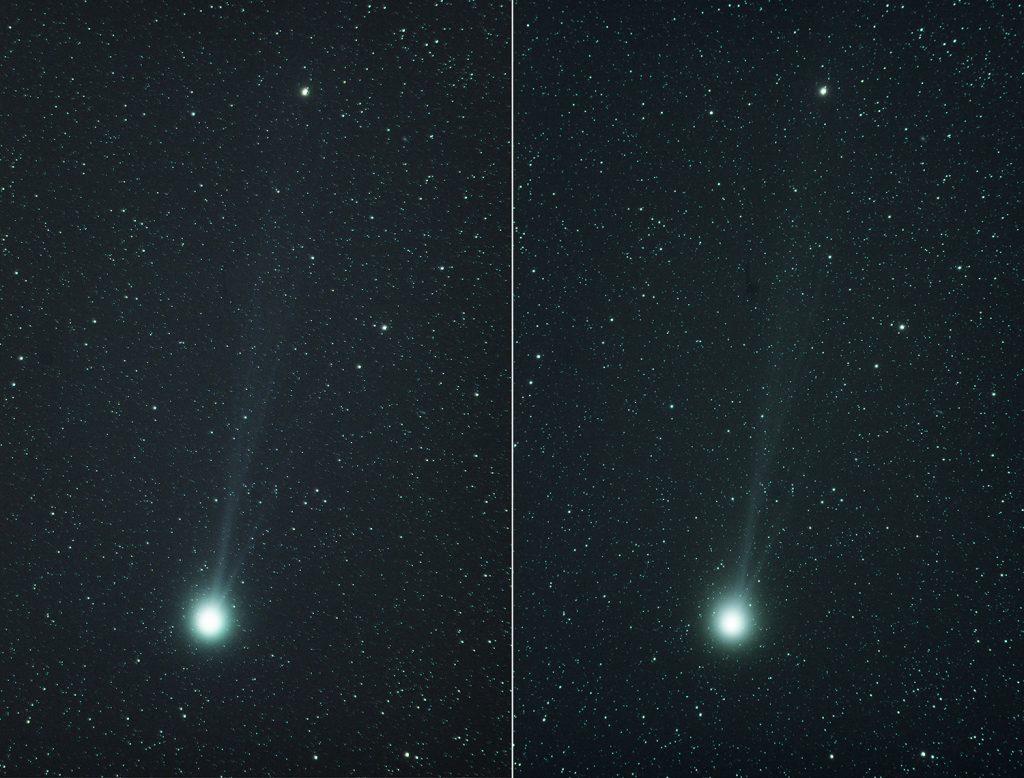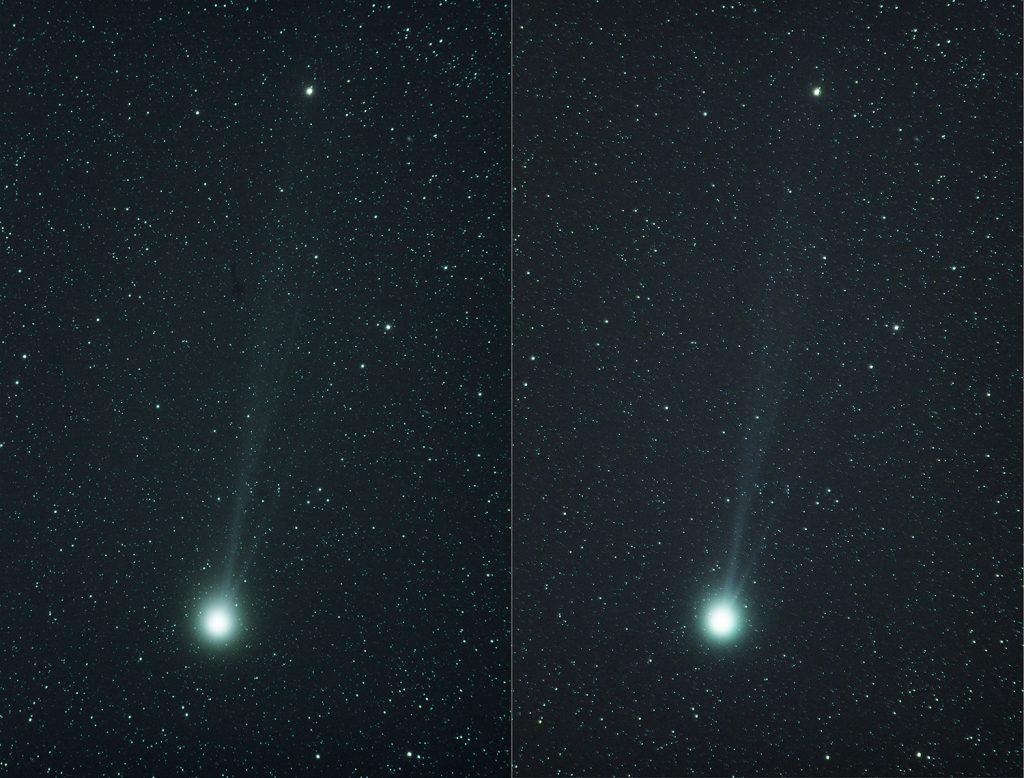I attended the BAA Comet Section Meeting in Northampton on Saturday. It was a fabulous day out (Despite the heat), speaking to like-minded people about these fabulous objects.
Amongst the many fabulous speakers, Simon White from Cumbria came up with a fantastic idea about taking comet images using remote telescopes from two different locations and producing a 3D comet image from them. It didn’t take me long to realise that this could also be done from a single location and you could take two pictures over time and if the movement is fast enough (And the features in the tail don’t change markedly) you could do the same thing in a single night.
So looking through My Images I found some images of Comet C/2014 Q2 Lovejoy taken on 6th February 2015.
I re-stacked 8 subs and then the next 8 subs to produce two different images. Each image is stacked on the comet position, so in the two images, the position of the comet is slightly different.
So when the two images are put side-by-side, and you cross your eyes, you can definitely see the 3D effect (I hope it works now).
That was an absolutely fantastic idea Simon. I can see that I have now lost even more of the little spare time I have.
But that’s what I love about these sort of events. We all swap ideas and learn from others.

Since submitting this, I have found that some people have problems seeing the 3D effect properly.
They tend to focus beyond the screen, rather than in front of it. I find that much harder to do.
So for their benefit, here’s the other version, with the images swapped over.

